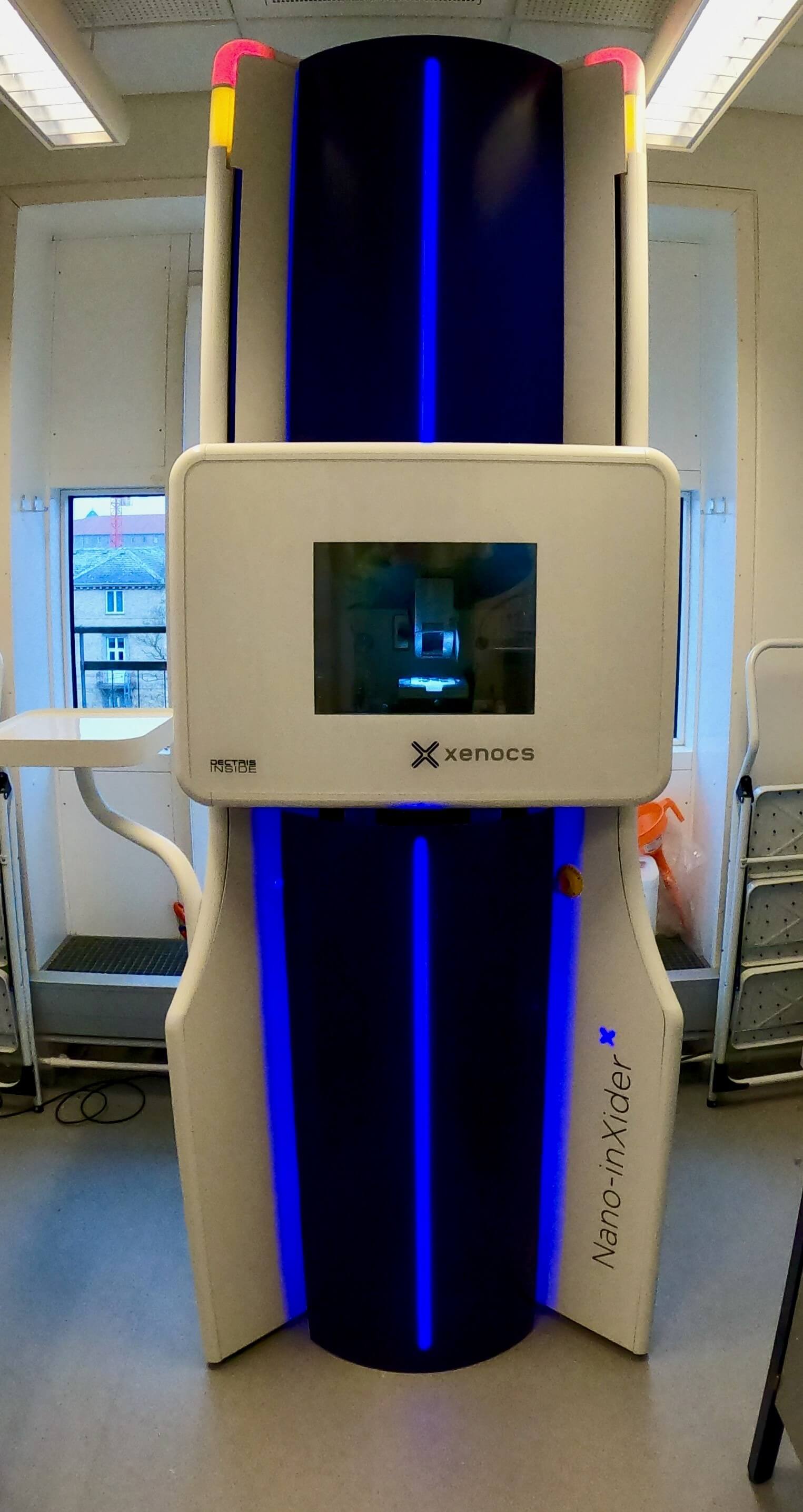Nano-inXider

The Nano-inXider at FOOD is part of the Cross-disciplinary X-ray Center that operates two SAXS/WAXS instruments used for structural investigations at the nanometer scale of samples from all areas of material science and caters for users from academia and industry alike.
Description
The SAXS instruments Ganesha located at the Niels Bohr Institute and the Nano-inXider located at Department of Food Science are used for structural studies of materials of various kinds, for example polymer systems, nano-particles, food and soft matter systems, bio-membranes, liquid crystals, biomacromolecules in solution and many more. There are in principle no limits to the form of the samples - we can handle liquids, gels, pastes, powders, films and solids alike. However, for users particularly interested in weakly scattering biomacromolecules in solution, we recommend contacting our sister facility, CPHSAXS, at the Department of Drug Design and Pharmacology.
The Nano-inXider instrument is a vertical-geometry SAXS and WAXS instrument designed for simplicity and high throughput of samples from a wide array of scientific fields. The vertical set up makes the instrument particularly useful for liquids, emulsions, and similar samples from soft matter.
The source of the Nano-inXider instrument is a 30 W microfocus sealed Cu-tube producing X-rays with a wavelength of 1.54 Å. The windowless beam path is under vacuum all the way to the detector for low-noise, high-signal measurements.
The instrument accommodates a number of sample holders and conditions including standard holders for powders and liquids as well as a low-noise flow cell. Sample temperature can be controlled via temperature sample stages allowing users to investigate samples in temperatures ranging from -150 °C to 350 °C.
Two fixed Dectris Pilatus hybrid photon counting detectors are used continuously and simultaneously, which allows the instrument to acquire SAXS and WAXS up to 2θ = 60°. SAXS measurements are conducted without a beamstop.
The acquisition software with automatic data reduction produces data in absolute units and offers live data visualization during experiments. XSACT (X-ray Scattering Analysis and Calculation Tool) is used for data analysis and subsequent interpretation.
Data reduction and handling
BioXTAS RAW - GUI based, free, open-source Python program for reduction and analysis of small-angle X-ray solution scattering (SAXS) data
Primus - Manipulations with experimental 1D small-angle scattering data
XSACT - X-ray scattering data processing and analysis by XENOCS
Analysis
SASView - Open source, collaboratively developed software for the analysis of any small angle scattering data
ATSAS - A program suite for small-angle scattering data analysis from biological macromolecules
BayesApp - Website with implementation of the BIFT algorithm for computing pair-distance distributions
Options and requirements for use
Training is needed for independent operation – Ganesha requires extended training, Nano-inXider a short training session. Online help is available on request. All experiments needs approval from the responsible ViP who will help with design of measurements. Subsequent analysis help and training is negotiated separately.
Interested parties are encouraged to request time for experiments using the form below, although first time users are encouraged to contact the facility manager first for a feasibility assessment.
Request beam time here.
At the start of a collaboration on research with the University of Copenhagen, a cooperation agreement must be drawn up. There are different types of agreements depending on the nature of the cooperation. See more here: collaboration.ku.dk/cooperation-agreements/
For further information, contact Associate Professor Jacob Kirkensgaard, jjkk@food.ku.dk

